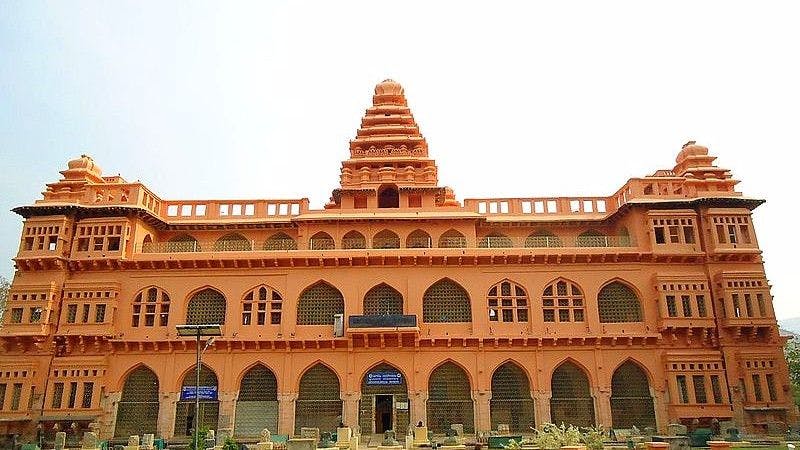Chandragiri: The Last Capital of the Vijayanagara Empire
BOOKMARK
The Battle of Talikota in 1565 CE is seen as a watershed of sorts in the history of Southern India. The devastating defeat of the great Vijayanagara kingdom, by the armies of the Deccan Sultanates, changed the course of history. While most of us left it there, what is rarely spoken about is that a small part of the grand Vijayanagara empire continued to exist for another 81 years after this battle. Centered further east, the only point of reference to this chapter of southern history is the fort of Chandragiri, in the Chittoor district of Andhra Pradesh.
– A part of the grand Vijayanagara empire continued to exist for 81 years after the Battle of Talikota
After the destruction of Vijayanagara’s imperial capital Hampi and the death of Emperor Aliya Rama Raya on the Talikota battlefield, his brother, Tirumala Deva Raya the Regent, fled with the court to the town of Penukonda, where he died. Since the city of Hampi was close to Vijayanagara’s border with Bijapur and constantly under attack, it was decided that the capital should shift south, where it would be relatively safe from the invaders. The attacks didn't stop entirely. In 1596 CE, it was decided that the capital would be shifted further afield to the highly fortified and well-protected city of Chandragiri in the Chitoor district of Andhra Pradesh.
At the height of its glory, the Vijayanagara empire was spread from Raichur in Karnataka, to Kanyakumari at the Southern tip of India. By 1596 CE, this had shrunk considerably. The Empire was just a patchwork of semi-independent feudatories. Ironically, though while Chandragiri became the capital of a much-weakened Vijayanagara Empire by the end of the 16th century CE, it was once the site from which the British East India Company managed to get a great toehold into the South. It was from here that the not-so-powerful Vijayanagar emperor Sri Ranga Raya II signed off Fort St George (which evolved into present day Madras/Chennai) to the British in 1639 CE.
As the Vijayanagar empire collapsed after the Battle of Talikota, so did the power of the king, but problems had started much earlier. The later Vijayanagara kings wielded such little authority, that local chieftains who once owed allegiance to the Vijayanagara Emperors, became very powerful. Local rulers such as the Nayakas of Thanjavur, Gingee, and Madurai, Wodeyars of Mysore and Gowda chiefs of Yelahanka (Bangalore) had carved out semi-independent principalities, with the Vijayanagara King acting as just a nominal overlord.
The historical fort of Chandragiri, where the capital finally shifted in the dying years of the Vijayanagar kingdom, was originally built by the Yadavaraya dynasty in 1000 CE. The Yadavarayas were a local dynasty, which ruled the area between 11th and 14th century CE, before their kingdom was incorporated in the Vijayanagara empire. Chandragiri was captured in 1367 CE by Vijayanagara forces from the Yadavarayas
– The fort of Chandragiri, where the capital shifted in the dying years of the Vijayanagar kingdom, was originally built by the Yadavaraya dynasty in 1000 CE
The fort at Chandragiri is spectacular. It has two gateways which are 1 km apart, with beautiful carved pillars. The Fort has two parts in the innermost enclosure – a lower fort and an upper fort. The inner fort has two outstanding palaces – Raja Mahal, the King’s Palace and Rani Mahal, the Queens Palace. The Raja Mahal is one of the finest examples of Vijayanagara architecture, which shows a unique combination of Hindu and Islamic influence. The three-storied palace has a splendid Durbar Hall where in 1639, the Vijayanagara ruler Sri Ranga Raya signed the document granting the site of Fort St George to the British East India company. This would be the beginning of the great city of Madras (Chennai). Currently, the Archeological Survey of India (ASI) runs an Archaeological Museum in Raja Mahal, displaying a fine collection of sculptures and bronzes from the Vijayanagara period. The other building in the fort is, what is popularly called, Rani Mahal, which was the residence and office of the commandant of the fort. It is a smaller version of the Raja Mahal.
After the loss of Chandragiri, following another debilitating battle with the armies of Golconda, Sri Ranga Raya III fled and took refuge under his vassal Shivappa Nayaka of Ikkeri in Karnataka. With this and then the death of the last Vijayanagara king Sri Ranga Raya III in 1678 CE, the curtains fell on the Vijayanagara Empire that was started by two audacious brothers, Harihara I and Bukka in the early 14th century CE.
The Vijayanagara Empire had collapsed but it had also spawned a series of other small kingdoms. Today, few head to Chandragiri Fort to learn about the last years of Vijayanagara. They go there because it is a short way away from one of the most popular temple towns in India - Tirupati.
– LHI TRAVEL GUIDE
Chandragiri Fort is located around 16 km from the famous pilgrim town of Tirupati in Chittoor District of Andhra Pradesh. The nearest railway station to the Chandragiri fort is Tirupati Railway station at the distance of 16 kms and the nearest airport is Tirupati International airport about 30 kms away.









